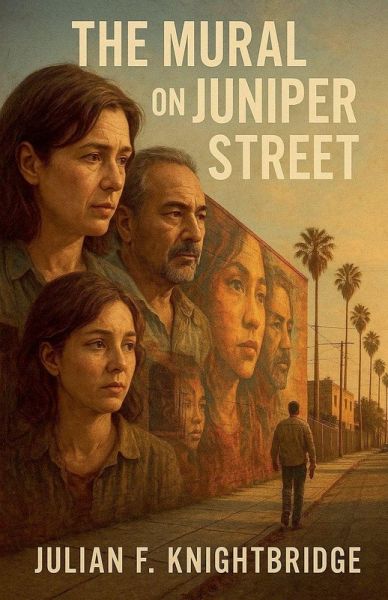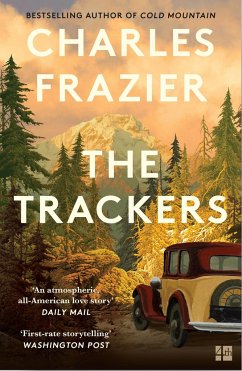
The Mural on Juniper Street

PAYBACK Punkte
10 °P sammeln!
Juniper Street is not the Southern California of postcards. The sun here is fierce. The walls are cracked. Life is lived in the narrow spaces between what is promised and what is possible. This small block, overlooked by the city that surrounds it, carries stories that are often invisible to the world outside. At the center of the block stands a bare wall that Maria Alvarez begins to paint. She starts alone. Her brushstrokes are slow and careful, a way of keeping herself company. What begins as a private act becomes something larger. The mural gathers the eyes and hearts of the street. It grow...
Juniper Street is not the Southern California of postcards. The sun here is fierce. The walls are cracked. Life is lived in the narrow spaces between what is promised and what is possible. This small block, overlooked by the city that surrounds it, carries stories that are often invisible to the world outside. At the center of the block stands a bare wall that Maria Alvarez begins to paint. She starts alone. Her brushstrokes are slow and careful, a way of keeping herself company. What begins as a private act becomes something larger. The mural gathers the eyes and hearts of the street. It grows into a piece of defiance and a thread that begins to bind the block together. Carlos Morales has lived more of his life in Los Angeles than in Mexico. His hands are stained with decades of work as a mechanic. He feels the pull of time in his chest and the weight of a promise he never fulfilled. He spends his mornings fixing what is broken for neighbors who can no longer afford to pay him, and he finds himself watching Maria work. The patience of her brush and her refusal to quit remind him of a younger version of himself. Lisa Daniels tries to keep her family whole. She works two jobs and comes home to bills that do not wait. Her eldest son Jordan is a gifted athlete with the chance of a scholarship, but an injury during a tryout brings that dream to a sudden stop. He walks with a limp and an even heavier sense of disappointment. Her youngest son Darnell is a boy trying to find out who he is in a place where quick money and fast talk seem like the only way to be noticed. The streets pull at him, and Andre, the man who runs the block, promises him respect that comes at a price. As Maria's mural grows, the block feels a change. Andre sees the wall as a threat to his hold on the street. The whispers he spreads turn into painted threats, then into attacks, and finally into nights where the sky glows with fire. Each time, the block is forced to decide if it will scatter or stand. The mural begins to tell a story that is not written anywhere else. Maria paints the faces of the woman who sells tamales, the man who sweeps the sidewalk, and the children who play until the light fades. Every new color on the wall makes these lives harder to ignore. The people who gather around that wall are the heart of the book. There is a quiet friendship between Darnell and Reverend James, a man who has walked the same streets and knows where those roads can lead. There is Carlos, who extends credit to keep his neighbors moving forward. There is Malik, a silent watcher who carries a past he does not speak of until he steps into the open to stand between the block and harm. When Andre comes back one last time, what meets him is no longer fear. The block links arms. Buckets of water move from hand to hand. The wall that has been scarred by fire and graffiti becomes the center of their strength. The Mural on Juniper Street is a novel of small acts that hold a community together. It is about the bonds that form between people who share the same sidewalk and learn to look out for one another. It is about resilience in the face of neglect and the quiet power of those who choose to stand. Readers who love the close portraits of Elizabeth Strout and the sweeping interconnected voices of Colum McCann will find in these pages a story of a block that decides to save itself.













